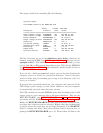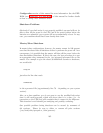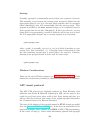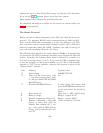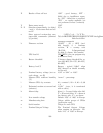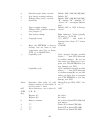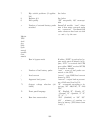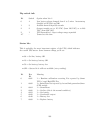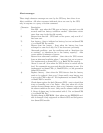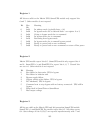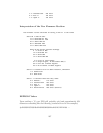
X Results of last self test “OK” - good battery, “BT” -
failed due to insufficient capac-
ity, “NG” - failed due to overload,
“NO” - no results available (no
test performed in last 5 minutes)
Y Enter smart mode “SM”
Z—Z Shutdown immediately (no delay)
- need > 1.5s between first and sec-
ond Z
N/A
a Show protocol version.alert mes-
sages.valid commands (delimited
by periods)
“3.!$%+?=#—.ˆAˆNˆZ+-
789<@ABCDEFGKLMNOPQRSUVWXYZ’abcefgjklmnopqrsuvzy˜ˆ?”
- Link-Level.alert-
messages.commands
b Firmware revision “50.9.D” - 50 = SKU (vari-
able length), 9 = firmware
revision, D = country code
(D=USA, I=International,
A=Asia, J=Japan, M=Canada)
c UPS local id UPS
IDEN (you can program any
8 characters here)
e Return threshold % battery charge threshold for re-
turn (00=00%, 01=15%, 02=25%,
03=90%)
f Battery level % Ranges - typical “100.0” when
fully charged as should normally
be the case
g Nominal battery voltage (not ac-
tual voltage - see B)
“012” or “024” or “048”.
h Measure-UPS: ambient humidity
(%)
“nnn.n” - percentage
i Measure-UPS: dry contacts 10 = contact 1, 20 = 2, 40 = 3, 80
= 4
j Estimated runtime at current load
(minutes)
“0112:” (note, it is terminated
with a colon)
k Alarm delay 0(zero) = 5 second delay after fail,
T = 30 second delay, L = alarm at
low battery only, N = no alarm
l Low transfer voltage Default “103” or “208” in Europe
m Manufacturing date Unique within groups of UPSes
(production runs)
n Serial number Unique for each UPS
o Nominal Output Voltage The Nominal Output Voltage
when running on batteries. De-
fault “115” or “230” in Europe.
190





